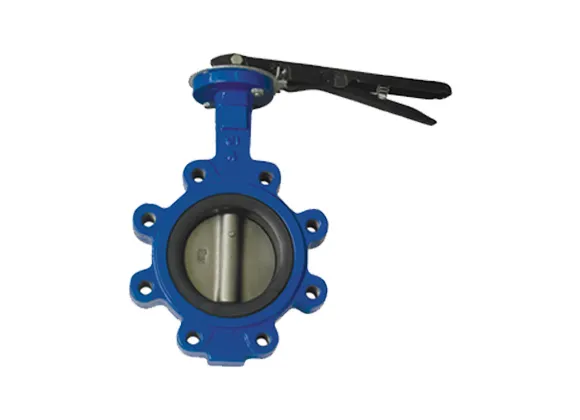Feb . 08, 2025 05:24
Selecting a DN 50 butterfly valve brings a multitude of benefits and considerations to the forefront for engineers and procurement managers. The DN 50, a nominal diameter of 50 millimeters (or roughly 2 inches), refers to a standard measure widely used for pipe and valve specifications in various applications, including water distribution, HVAC systems, and process industries. Understanding the features and benefits of a DN 50 butterfly valve can significantly enhance operational efficiency and cost-effectiveness in relevant systems.

Butterfly valves, as a category, are renowned for their compact design, cost efficiency, and ease of operation. Their streamlined structure is advantageous in systems where space is at a premium. This is particularly relevant for DN 50 butterfly valves, which offer a perfect balance of size and function for medium-scale flow systems. Engineers frequently opt for butterfly valves over other types, such as gate or ball valves, due to their ability to throttle flow with precision while maintaining a lightweight form factor.
One of the key advantages of DN 50 butterfly valves is their ease of installation and maintenance. The wafer design, which slips between flanges, or the lug style, which affixes securely to pipe flanges, allow them to be fitted into existing pipelines with minimal disruption. This adaptability reduces the need for extensive system downtime, a critical consideration in industrial settings where outages translate directly into financial loss. Furthermore, the simplicity of butterfly valve mechanisms means that fewer components are prone to wear and tear, thereby extending their operational lifespan and reducing maintenance costs over time.

From a material standpoint, DN 50 butterfly valves are available in a plethora of options including cast iron, stainless steel, and thermoplastics. Each material choice caters to specific industrial needs. For instance, stainless-steel butterfly valves are preferred in corrosive environments due to their superior resistance to rust and chemical damage. Conversely, thermoplastic valves can be an economical choice for non-corrosive applications, balancing cost with durability.
Flow control precision is another hallmark of the DN 50 butterfly valve. Its disc design enables quick open and close actions, which can be operated manually, pneumatically, or electrically. Engineers appreciate the precision it offers, as even minor adjustments to the valve position enable significant changes in flow rate, which is crucial in maintaining system integrity and efficiency.
dn 50 butterfly valve
In terms of expertise, selecting the right DN 50 butterfly valve also involves understanding the specific operational parameters of a system. Pressure ratings, typically given in bar or psi, indicate the maximum pressure the valve can safely handle. Understanding these ratings is vital for engineers to ensure compatibility with the system's requirements. A valve with insufficient pressure capacity could fail catastrophically, impacting system safety and reliability.
The authoritativeness of DN 50 butterfly valves is reinforced by their widespread acceptance and use across multiple industries. Major manufacturers comply with international standards such as ISO, ANSI, and API, which ensures that the valves meet rigorous quality and performance benchmarks. Industry certifications bolster trust in these products, offering assurance that they are fit for purpose even in demanding applications.
Trustworthiness in DN 50 butterfly valves is also enhanced by the transparent and data-driven approach manufacturers take in providing performance metrics and life expectancy forecasts. These details, often found in manufacturers’ technical sheets, allow engineers and procurement managers to make informed, data-backed decisions. Trust is further cultivated through service warranties and support, which many reputable manufacturers provide, instilling confidence in their product’s long-term performance.
In summary, a DN 50 butterfly valve is not merely a flow control device, but a strategic component that, when selected and utilized correctly, can lead to significant operational efficiencies and system reliability. Its versatility, cost-effectiveness, and minimal maintenance requirements make it a standout choice among valve options. By focusing on the expertise, authoritativeness, and trustworthiness inherent in this technology, businesses can optimize their operational outcomes while securing long-term value.


 Call us on:
+86-311-86935302
+86-311-86935302
Call us on:
+86-311-86935302
+86-311-86935302
 Email Us:
info@thriveonvalve.com
Email Us:
info@thriveonvalve.com South of Huanmadian Village Town, Ningjin County, Xingtai, Hebei Province, China
South of Huanmadian Village Town, Ningjin County, Xingtai, Hebei Province, China